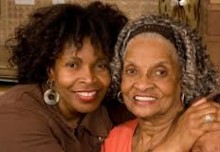 Only about one in seven adults over age 65 do any kind of routine strength training, according to the experts. Those six in seven who are neglecting their exercise regimens are the people who are hastening nature’s unfortunate digression to greater bone and muscle loss as well as decompensation owing to other common chronic diseases. And people with conditions like heart disease, diabetes or arthritis can help delay the worsening of these conditions by regular exercise. Exercise also is a great way to be sure that an older adult can “take care of themselves” longer and along the way, it reduces stress and improves their mood. Engaging in regular physical exercise is one of the healthiest things older adults can do to maintain their health and well-being. If you are a caregiver to an older loved one, encouraging them to be more physically active is good for their bodies as well as their mental outlooks.
Only about one in seven adults over age 65 do any kind of routine strength training, according to the experts. Those six in seven who are neglecting their exercise regimens are the people who are hastening nature’s unfortunate digression to greater bone and muscle loss as well as decompensation owing to other common chronic diseases. And people with conditions like heart disease, diabetes or arthritis can help delay the worsening of these conditions by regular exercise. Exercise also is a great way to be sure that an older adult can “take care of themselves” longer and along the way, it reduces stress and improves their mood. Engaging in regular physical exercise is one of the healthiest things older adults can do to maintain their health and well-being. If you are a caregiver to an older loved one, encouraging them to be more physically active is good for their bodies as well as their mental outlooks.
But some older adults may fear that it will be too hard to exercise or that it may even harm them. The first thing to do is talk to their provider to see if exercise is safe; be sure to note if the provider personally is in reasonable shape before asking their opionions. If you will receive a valid answer, then begin to ask about what kinds of exercise. And remember to encourage your older loved one not to try to get back into great shape the very first day at the gym. If it has taken a few decades to get out of shape, and it clearly will take more than a few sessions to get back into shape; only on the “Biggest Loser” television program will it all happen within one viewing hour. So how to start?
- Balance – one-third of adults over age 65 and one half of those over 80 will fall each year. Exercises that help to restore the coordination of the muscles that help one walk, stand and stoop will go far in creating a safer self.
- Stretching – flexibility is as important as balance, so gentle stretches help to make muscles more pliable and nimble. Stretching alone will not improve strength, but they will be a counterpoint to strengthening to avoid injury while the body gets stronger.
- Strengthening – we see too many ads about low testosterone levels being responsible for men’s bodies losing mass (beware of the cardiovascular risk of these hormone replacement therapies). Yet, working on building muscle mass also helps manage weight and blood glucose levels.
- Endurance – your older loved one should not run a marathon the first day out. Endurance is probably the last of the four goals that one reaches as an older loved one increases their workout time or mileage over a period of months or even years.
Taken together these four aspects to exercise will not only make everyone’s body stronger, but it also will boost the immune system. Along the way, getting into better shape will also be the best preparation for any bout with any medical condition and recovery from that condition. There is no time like the present to get into shape for getting older, and that goes for your older loved ones as well as you, the caregivers.
Charlotte Bishop is a Geriatric Care Manager and founder of Creative Care Management, certified professionals who are geriatric advocates, resources, counselors and friends to older adults and their families in metropolitan Chicago. Please email your questions to info@creativecaremanagement.com.





